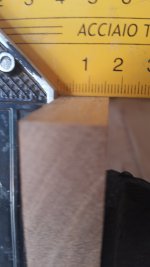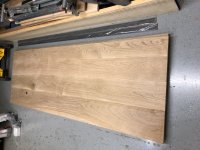goldman8073
Member
- Joined
- Jan 5, 2017
- Messages
- 4
I am having difficulty in getting my TS55 to cut square along the grain on some hardwoods. As I am in Australia, most of the wood I am using is considered by Janka to be hard. I have taken the saw to a Festool approved workshop and had them test it in my presence. They agreed I was cutting it correctly and the saw and cutting tray were all in good condition. They had no idea why this was happening. I was cutting batu (eastern mahoganny) along the grain, and no matter which saw blade I used, the saw would not cut at 90 degrees. In fact it is so bad that timber that is 20mm thick leaves a gap that is up to 1.5mm out of square.
If I cut mdf, pine, and some lighter hardwoods, no problem, but jarrah, Tasmanian Blackwood etc. same problem, well off 90 degrees.
I think the saw is excellent, and often use just the TS55 to cut along timber that I can then join together without any further work.
Has anyone else experienced this please, and if so, did you find a solution?
If I cut mdf, pine, and some lighter hardwoods, no problem, but jarrah, Tasmanian Blackwood etc. same problem, well off 90 degrees.
I think the saw is excellent, and often use just the TS55 to cut along timber that I can then join together without any further work.
Has anyone else experienced this please, and if so, did you find a solution?


